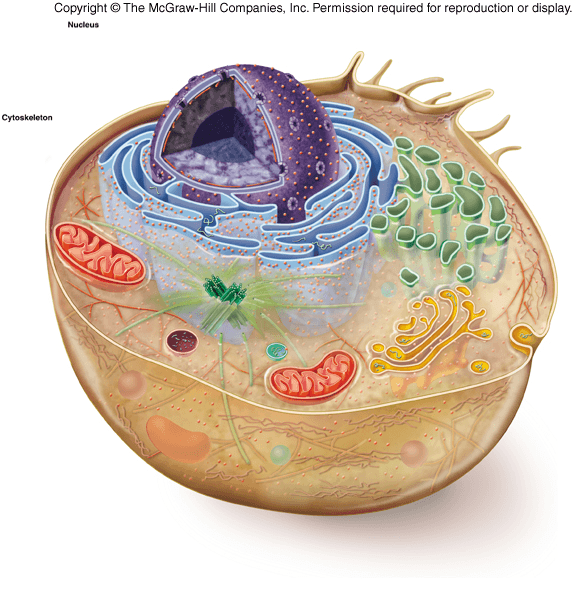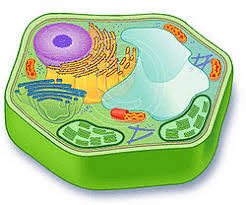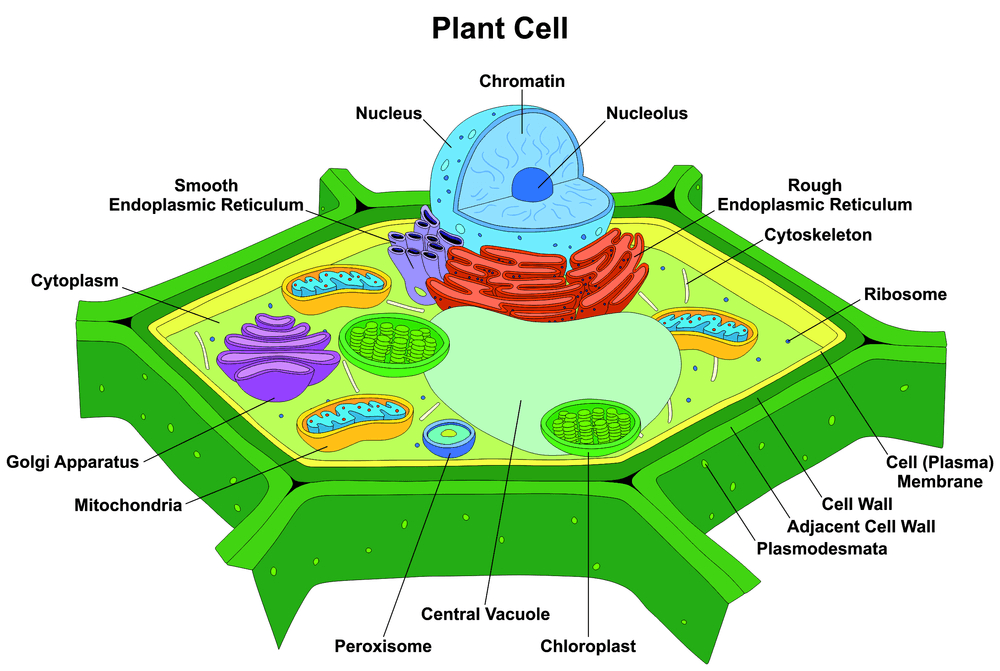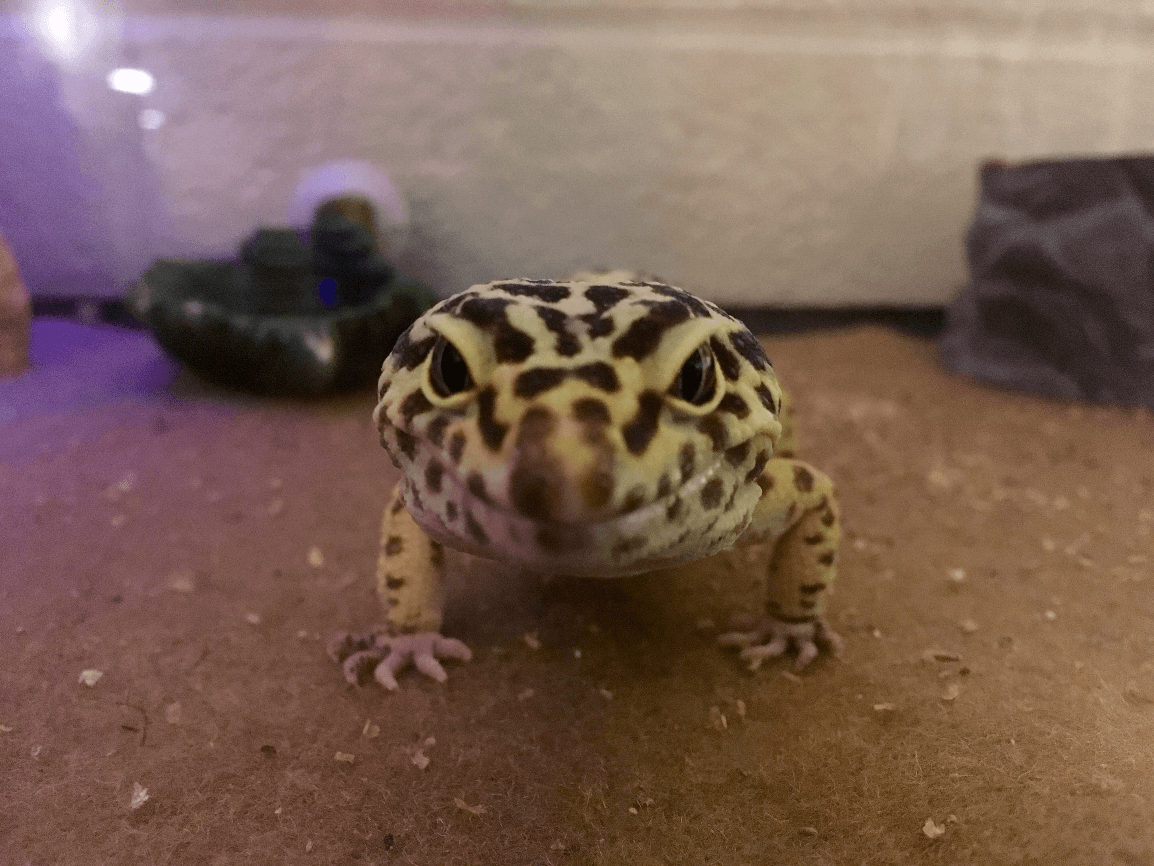Levels of Organization
Scientists
Organelles
Analogies
Misc
100
What is the smallest unit of life?
A cell
100
This father son team developed the first compound microscope.
Hans/Zacharais Janssen
100
This organelle makes proteins.
Ribosomes
100
Give an analogy for the nucleus.
Nucleus is like a town hall or principal within a school.
100
What do chloroplasts, cell walls, and large vacuoles all have in common?
They are all found in plant cells.
200
What is the genetic material of a cell, also called chromosomes.
DNA
200
Named cells and looked at cork cells
Robert Hook
200
This organelle contains digestive enzymes to break down stuff in the cell.
Lysosomes
200
Give an analogy for the mitochondria and a reason why you choose this.
Mitochondria - power plant - because it provides energy for a city, like a mitochondria provides energy for the cell.
200
How can a unicellular organism be classified as an eukaryotic cell?
A: If it has membrane-bound organelles
B: If it does not have membrane-bound organelles.
C: If it is a large cell.
D: It is made of unicorn dust.
A: If it has membrane-bound organelles
B: If it does not have membrane-bound organelles.
C: If it is a large cell.
D: It is made of unicorn dust.
A: Eukaryotic cells have membrane bound organelles.
300
What is a single celled organism without a nucleus or membrane-bound organelles called and provide an example.
Prokaryote
Bacteria
Bacteria
300
This scientist was the father of microbiology. He looked through his own microscope to discover animecules.
Anton Leeuwenhook
300
This organelle provides support and protection; it surrounds the cell membrane.
Cell Wall
300
Give an analogy for the vacuole, chloroplast, and a golgi body and a reason why you choose these.
Vacuole - Storage Closet - stores stuff
Chloroplast - solar panels - provides energy from the sun.
Golgi body - Mail Man - collects and distributes packages.
Chloroplast - solar panels - provides energy from the sun.
Golgi body - Mail Man - collects and distributes packages.
300
What are the three parts of the cell theory?
All Living things are composed of cells
All cells are produced from other cells.
Cells are the basic units of structure and function in all living things.
All cells are produced from other cells.
Cells are the basic units of structure and function in all living things.
400
What type of cell creates multi or unicellular organisms that contain a nucleus and provide an example.
Eukaryotic, humans
400
These two scientists had last names that kinda sounded the same and were both German. Who were they and what did they do?
Theodore Schwann - Zoologist that looked at animal cells/tissues.
Matthais Schleinden - German Botanist who observed plant cells.
Together they said all living things are made up of cells.
Matthais Schleinden - German Botanist who observed plant cells.
Together they said all living things are made up of cells.
400
Name all of the parts that are in an animal cell that are not in a plant cell.

Trick question: Plant cells have all of the organelles that animal cells have.
400
Thinking about this room, make analogies for three things in this room. You must provide explanations for this room. The analogies must be about organelles.
Desks - Hold books - Vacuoles
Plants - Take in light - Chloroplasts
Door - Controls what goes in and out of the room - Cell membrane
Plants - Take in light - Chloroplasts
Door - Controls what goes in and out of the room - Cell membrane
400
What is homeostasis?
Homeostasis is the ability to keep internal conditions the same. For instance, humans have an average temperature between 96 and 98. If we go over that we are sick.
500
Label each part of the picture below.
Red Cell - Prokaryotic Cell
Green Picture under it - Bacteria
Two Cells - Eukaryotic
Blue Cell - Animal Cell
Green Cell - Plant Cell
Green Picture under it - Bacteria
Two Cells - Eukaryotic
Blue Cell - Animal Cell
Green Cell - Plant Cell
500
What did Rudolf Virchow do?
How did this discovery change science at the time.
How did this discovery change science at the time.
He stated living cells come from other living cells.
At the time most people believed in spontaneous generation and that life came from no where.
At the time most people believed in spontaneous generation and that life came from no where.
500
Name each organelle shown in the picture.



500
Make analogies for the following organelles and explain your reasoning for each. The analogies must be related to the school.
Nucleus, Cell Membrane, Mitochondria, Vacuoles, Nuclear Membrane
Nucleus, Cell Membrane, Mitochondria, Vacuoles, Nuclear Membrane
Answers will vary.
Nucleus - Principal - Tells the school what to do
Nuclear Membrane - Principals Office - helps protect the principal selecting who goes in and out of the nucleus.
Cell Membrane - Fence
Mitochondria - Generator/Boiler room - Provide energy for the school
Vacuole - Storage room - stores stuff for the school.
Nucleus - Principal - Tells the school what to do
Nuclear Membrane - Principals Office - helps protect the principal selecting who goes in and out of the nucleus.
Cell Membrane - Fence
Mitochondria - Generator/Boiler room - Provide energy for the school
Vacuole - Storage room - stores stuff for the school.
500
Provide an analogy for this beautiful creature and make it good. Remember he is a pet.


I would compare Geico to a Lysosome, the eats and protects his cage, just like a lysosome protects the cell.